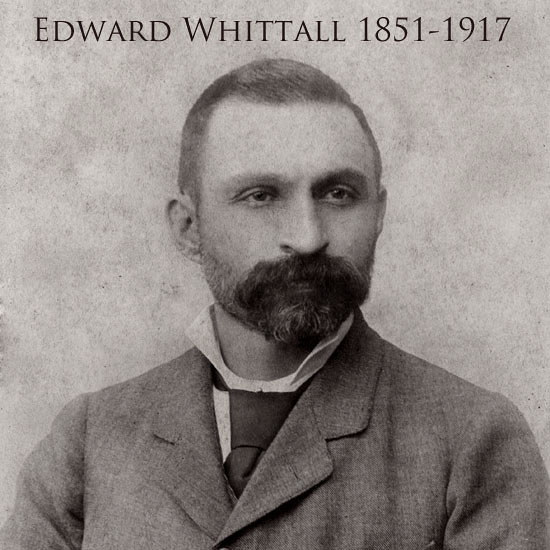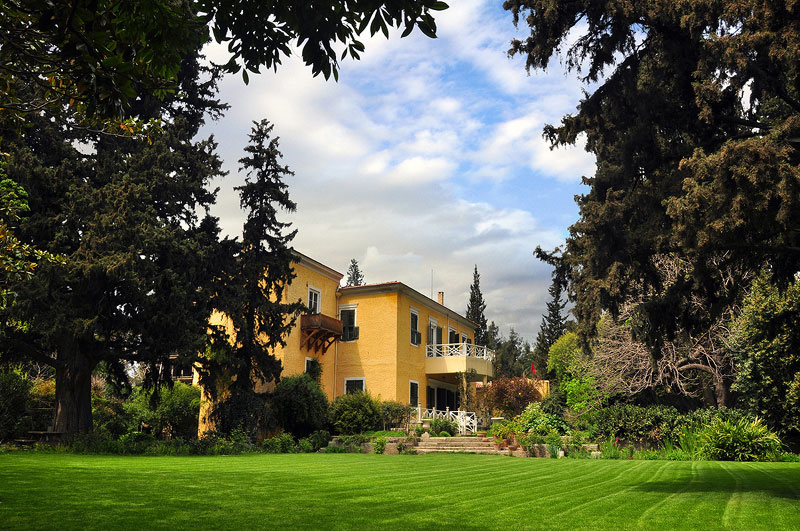The corner house was bought by Edmund Giraud on 14 May 1919 from the heirs of Antoine Barry (Adolphe, Frank and Albert Barry) for 5,000 pounds sterling. The location of the corner house is described as follows in the deed of sale: “limitee au nord par la proprietee Fred Giraud et des deux autres cotes par la rue publique”. Therefore the property next door to the corner house belonged to Edmund’s father. Edmund’s brother Jim lived in this house after Frederic’s death in 1922, hence it was later known as the Jim Giraud house.
The corner house in which Edmund lived had a fairly large garden of over 2000 square meters. This house was situated opposite Gwynneth Giraud’s house also known as the Edward Whittall house which had a much bigger garden of 17,000 square meters.
 |
The Edward Whittall property itself was bought by Edmund on the 23 May 1938, 19 years after he bought the corner house. According to the memorandum of agreement between Edmund Giraud and Edgar A. Whittall representing the heirs of Edward Whittall, the price paid was 10,000 pounds sterling. Edmund bought the Edward Whittall house for his son Godfrey who later married Gwynneth (Edwards). Edmund’s wife, Ruth, was a daughter of Edward Whittall and after the death of Edward’s wife Mary (Maltass) the Edward Whittall house was sold to Edmund by the heirs.
 |
 |
Edmund was a very keen piano player and in the early 1950’s he imported a large organ from Werner Bosch in Germany and installed it in his (corner) house at no 1 Gençlik Caddesi then Hürriyet Caddesi or in earlier days İsmet İnönü Caddesi. Edmund donated the organ to the Ankara Conservatoire in his will. He died in 1960 and the Organ was duly given to the Turkish Government and was eventually installed in the President’s Symphony Orchestra in Ankara where it is still to be found. Further information courtesy of Tarkan Sendal, from Istanbul, organist and organ-builder:
“This organ still resides at the Presidential Symphony Orchestra Concert Hall with around 2500 pipes.”
 |
After Edmund died in 1960 his (corner) house it was lived in by his wife Ruth for several years until her death, and by the housekeeper Jennie Mason known as “nurse”.
In the late 1960’s, just before the new law protecting historic buildings was passed an order was issued by the Bornova Belediye Baskani (N.K.) to expropriate the house for law courts. The expropriation comission put an official value of 175,000 liras on the house and expropriation was imminent when a building contractor (G.C.) in league with the Belediye was sent to offer 250,000 liras for a private sale. Knowing that the expropriation order would normally prevent a private sale to anyone else Godfrey sold his father’s house to the contractor for that price especially after being threatened with the expropriation of his own house and garden (the Edward Whittall House) should he fail to comply.
Within a month the (corner) house was stripped and gutted of its oak panelling and before the year was out construction had begun on several appartment blocks containing 250 luxury flats in total.
One of Edmund’s employees used to occupy an outhouse on this property. In order to compensate him for the loss of his house Godfrey bought him a small flat nearby a few months after the ‘forced’ sale of the (corner) house. It is revealing to note that this small flat cost Godfrey 125000 liras - half of the sum he recieved from the ‘forced’ sale of the whole property on which 250 flats were built.
This episode is a typical example of the fate that befell so many old houses in Bornova during this period; namely the use of expropriation laws by the Turkish Government to forcibly acquire private property at vastly undervalued prices. Some of these properties ended up in the hands of the University; others were made into schools or public buildings but many of these cheaply acquired properties were somehow developed into lucrative residential sites through the collusion of the corrupt local government with greedy building contractors.
In fact 5000 square meters (30%) of the Edward Whittall Property (including two outhouses and stable buildings) was expropriated at about this time for a school. The compensation recieved was barely enough to construct a wall along the new boundary.
Click for alternative views of the former Edmund Giraud house.
Click to read an article published in the Curtis’s Botanical Magazine 2011: ‘Edward Whittall (1851-1917) and his contribution to the Royal Botanic Gardens, Kew’ - Alison and Martyn Rix